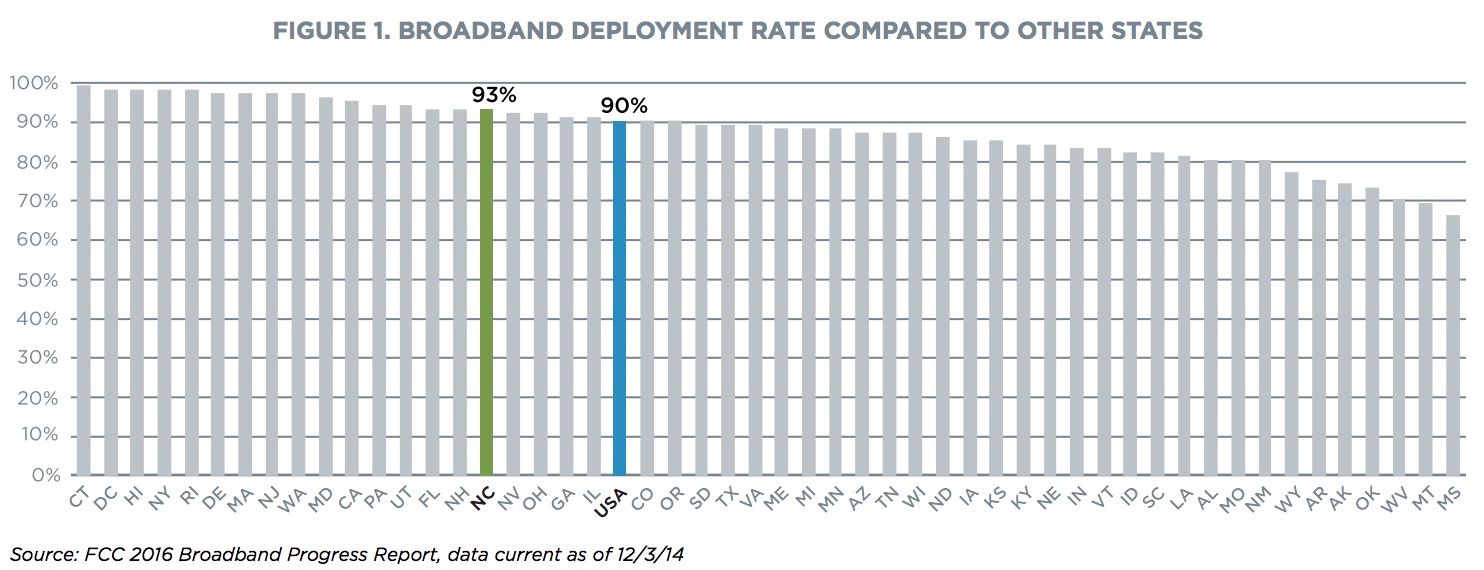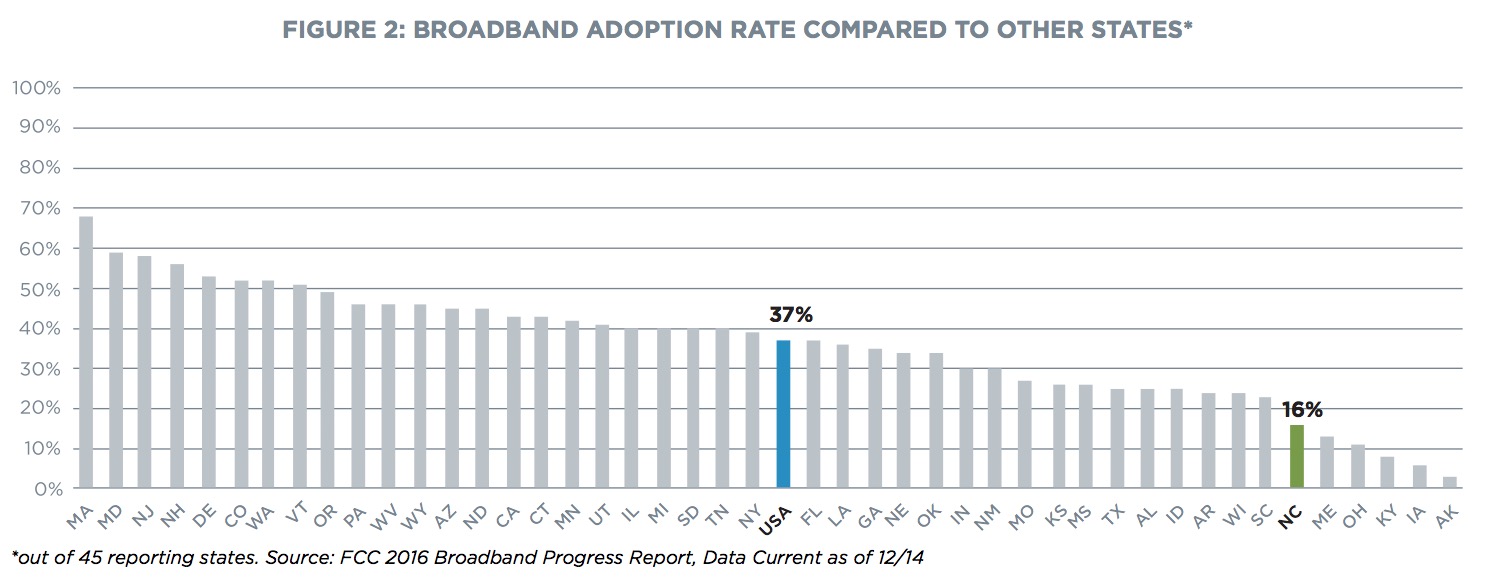BROADBAND INFRASTRUCTURE OFFICE
Executive Summary
High-speed internet may be the most significant innovation of the late 20th century. It’s benefits—from creating jobs to transforming education—are profound.
North Carolina’s broadband internet infrastructure is robust. The state leads the nation in developing, leveraging, and utilizing broadband-enabled technologies to help children learn and stimulate economic development. The existing infrastructure positions the state to create a 21st century prepared workforce, increase small businesses’ efficiency and effectiveness, and enable new healthcare technologies and service models. Faster, more reliable connectivity allows first responders and law enforcement to access data that could save lives and increase safety.
However, broadband’s benefits are not evenly dispersed and a digital divide, or “a gulf between those who have ready access to the internet and computers,” and those that don’t, is growing. Many communities, typically in sparsely populated or economically-distressed areas lack access to infrastructure or affordable service. Additionally, broadband adoption—the proportion of citizens subscribing to internet service—is low in NC given the rate of broadband availability in the state and contributes to the widening digital divide.
This divide, new technologies, user demand, and greater reliance on internet access, necessitates ongoing infrastructure upgrades within our state.
Time for a Plan
This plan answers the charge by the North Carolina General Assembly (NCGA) [EN: Session Law 2015-241] to assess the current status of broadband availability and use across the state, analyze the best methods and means to “establish universal access,” and offer strategies to achieve universal access.
A thorough analysis of current deployment, access, and adoption was completed using available data from state and federal resources and feedback from community leaders and stakeholders. In keeping with the statutory requirement, the plan’s recommendations are informed by subject matter experts, providers, state agencies, local leaders, and stakeholders representing various populations and industries (Appendices B and C).
The majority of the recommendations are state budget neutral. The few that require funding identify a funding source, typically an established private, federal, or state loan or grant fund.
Current Status
These recommendations and the implementation strategies build upon the current state of broadband deployment and adoption. NC’s broadband deployment rate ranks slightly above the U.S average (93 percent) and is the highest deployment rate among southeastern states. Providers continue to invest in expanding infrastructure in NC as evidenced by NC’s seven percent increase in deployment rates between 2013 and 2014.
The counties with low deployment rates are areas with low population density. Only one percent of the households without access are in urban areas.
However, North Carolina has one of the lowest adoption rates in the country. Even among households with access to broadband (defined at 25 Megabits per second and 3 Megabits per second upload) only 16 percent are subscribing. Adoption is particularly low among low-income households. In 2013 only 47% of NC households with annual incomes under $15,000 adopted broadband.
Because adoption is a key indicator of use, it is inextricably linked to universal access. Usage enhances consumer demand, which drives deployment and investment, which drives further innovation and economic development. Adoption rates directly affect broadband’s social benefits, namely a better educated and informed citizenry.
There are five main barriers to broadband adoption, and they’re particularly pronounced among low-income households. The primary barriers are: the cost or affordability of service; the real or perceived costs of a computer; laptop or other devices; digital literacy; and the internet’s perceived relevancy in a person’s daily life.
Within the broad topics of availability and adoption, the plan addresses specific issue areas and industries identified as facing significant and imminent challenges and opportunities.
The issue areas addressed in the plan include: K-12 education, economic development, telehealth, and public safety
As the state moves to digital learning and enhances internet connectivity within schools, a large number of children cannot complete digital homework assignments. This phenomenon-called the ‘homework gap’-is a significant concern among educators, community leaders, and parents and must be addressed if our children are to be prepared for the digital economy.
The state must better leverage broadband infrastructure to enhance economic development in rural areas, workforce development, and small business adoption. Using broadband technologies, the state can develop opportunities in the healthcare sector to reach a greater number of people and reduce costs. Finally, digital infrastructure must be large and secure enough to ensure the effective execution of public safety agencies’ missions—to protect North Carolinians.
Download full version (PDF): Connecting North Carolina
About the Broadband Infrastructure Office
ncbroadband.gov
The Broadband Infrastructure Office (BroadbandIO) was established by the State Chief Information Officer (SCIO) in 2015 as a statewide resource for broadband access, first responder communications and classroom connectivity initiatives led by the State of North Carolina…BroadbandIO aligns NC Broadband, the statewide effort to expand high-speed Internet access, with the FirstNet public safety initiative for improved resource-sharing across state agencies. The centralized and streamlined Office provides the opportunity to work across agencies and identify infrastructure development needs across North Carolina.
Tags: Broadband Infrastructure Office, Broadband IO, Internet, NC, North Carolina








 RSS Feed
RSS Feed